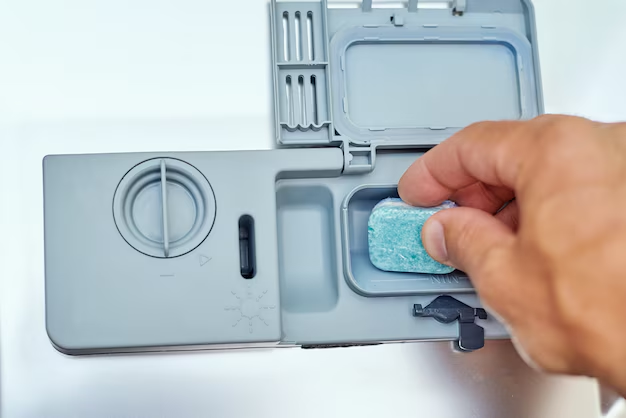Discover the Location of the Water Filter in Your Frigidaire Refrigerator
For many households, a refrigerator is more than just a place to store food—it's a pivotal element of daily life, keeping your essentials fresh and your water purified. If you're the proud owner of a Frigidaire refrigerator, you might find yourself wondering exactly where to locate and replace the water filter. Proper maintenance of your fridge’s water filter can greatly impact the quality of your water and ice, offering reassurance with every sip. In this comprehensive guide, we’ll navigate the ins and outs of finding and maintaining your Frigidaire refrigerator’s water filter.
Why Your Frigidaire’s Water Filter Matters
The Importance of Clean Water
Clean water is crucial for health and well-being, and refrigerator water filters provide an accessible source of filtered water and ice. Over time, filters can become clogged with contaminants like chlorine, lead, and particulates, which can affect the taste and safety of your water.
The Benefits of Regular Filter Replacement
Ensuring that your filter is replaced regularly can:
- Improve the taste and odor of your water and ice.
- Enhance the performance of your refrigerator's water dispenser and ice maker.
- Protect your family from consuming unwanted impurities.
Locating the Filter: Different Models, Different Places
Frigidaire refrigerators come in various models, and the water filter’s location might differ based on the model you own. Common locations include inside the refrigerator compartment, at the base grille, or in the rear of the appliance.
Common Locations
Top-Right Corner (Interior): Many side-by-side and French-door models house the filter in the upper right-hand corner inside the refrigerator. A cylindrical or back-facing insert could characterize this cluster.
Base Grille (Lower Front): In some models, you may find the filter in the grille at the bottom front of the fridge. This often involves a push-button or twist lock to release the filter.
Rear Compartment (Outside): Some older models have external filters located at the back of the refrigerator. This spot generally requires more effort to access and replace.
Identifying Your Filter Type
Before replacing your filter, check the model number of your refrigerator, usually found on a label inside the fridge. Using this, refer to the Frigidaire manual or website to confirm the filter type and location specific to your model.
Step-by-Step Guide to Replacing Your Frigidaire Water Filter
Preparation
Consult Your User Manual: Always the best starting point, your refrigerator’s manual will outline exact filter specifications and replacement instructions.
Purchase the Correct Filter: Ensure you have the correct type of replacement filter. Purchasing from authorized retailers guarantees compatibility and quality.
Gather Tools (If Necessary): Depending on the filter's location, you might need basic tools like a flathead screwdriver to access the filter compartment.
Replacing the Filter
For Interior Top-Right Corner Filters:
Open the Compartment: Twist or push the cover to release it. Some models might have a latch to unclip.
Remove the Old Filter: Rotate counterclockwise or pull out to remove the old filter gently.
Install the New Filter: Insert and turn clockwise until snug, or push in until you hear a click, depending on the model.
Reset the Indicator: Some models feature an indicator light signaling it's time for a new filter. Reset it by holding the reset button down for about 3 seconds.
For Base Grille Filters:
Locate and Access the Compartment: Open the grille or panel to reveal the filter.
Release the Old Filter: Depending on the mechanism, either twist, pull, or press a release button.
Install a New Filter: Align the new filter, and turn or slide it into place until secure.
Close the Grille: Return any panels or covers you removed initially.
Signs It's Time to Replace Your Frigidaire's Water Filter
Frigidaire suggests replacing refrigeration water filters every six months; however, factors like water quality and fridge usage can necessitate earlier replacements. Here are signs it might be time for a new filter:
- Bad Taste or Odor: Changes in taste or smell of water or ice.
- Decreased Flow Rate: Slower dispensing from the refrigerator.
- Ice Maker Malfunctions: Ice cubes are small, irregular, or not producing at normal speeds.
Maximizing Filter Efficiency and Refrigerator Longevity
Helpful Tips for Managing Your Water Filter
- Regular Checks: Develop a habit of checking your filter every three months.
- Make a Schedule: Set reminders to replace your filter as recommended.
- Ensure a Tight Seal: Always ensure that the filter is securely in place to prevent leaks.
- Flush the System: Run a few gallons of water through the new filter to eliminate any carbon residue or fine particles.
Simple Steps for a Cleaner, Healthier Home
- Monitor Usage Levels: More family members mean higher consumption, requiring more frequent filter changes.
- Use Well-Matched Filters: Stick to fridge and filter models for guaranteed compatibility and efficiency.
Quick Fire Summary 🔍
Location Check:
- Top-right corner, base grille, or rear compartment.
Replacement Tips:
- Reference the manual for fitting guidance.
- Change filters roughly every six months.
- Reset your filter indicator after installation.
Signs for Change:
- Unpleasant water taste.
- Reduced water flow.
- Faulty ice production.
By ensuring timely replacements and understanding your Frigidaire refrigerator’s needs, you'll maintain optimal functionality and ensure every glass of water or batch of ice is refreshing and clean. Whether you're hosting a party or simply enjoying a tally of chilled water, these practices promise to enhance your appliance experience and the quality of living in your home. 🧊💧
Optimize these insights, and you’ll not only harness the full potential of your Frigidaire refrigerator but also support health with every sip.
